Idea by
Maxwell Mutanda, Sunniva Viking, Tomà Berlanda
Call for ideas 2021
Of(f) the tracks: the legacy of colonial railway infrastructures
Of(f) the tracks: the legacy of colonial railway infrastructures

- Systemic changes
In Zimbabwe, as in other postcolonies, the imperial imaginaries of company towns and native townships developed in tandem with railway infrastructure to facilitate the extraction and exploitation of natural resources and human labor. Today these leftover morphological scars clearly manifest divisive, racist and unjust geographies.
Operating in, and upon, such segregated terrains—compounded by the complexity of conjuring post-pandemic life—calls for geographical imaginaries that go beyond tectonic artifice. It requires exploration, re-representation and restorative justice that challenges the neoliberal, Modern urban form, and the role infrastructure still plays in seeking fair distribution.
The proposal is a careful stratigraphy of railway landscapes that questions binary distinctions—urban and rural, non-Indigenous and local, rich and poor—to understand territories of discriminatory human settlement, in an effort to redress environmental, economic and racial injustices.
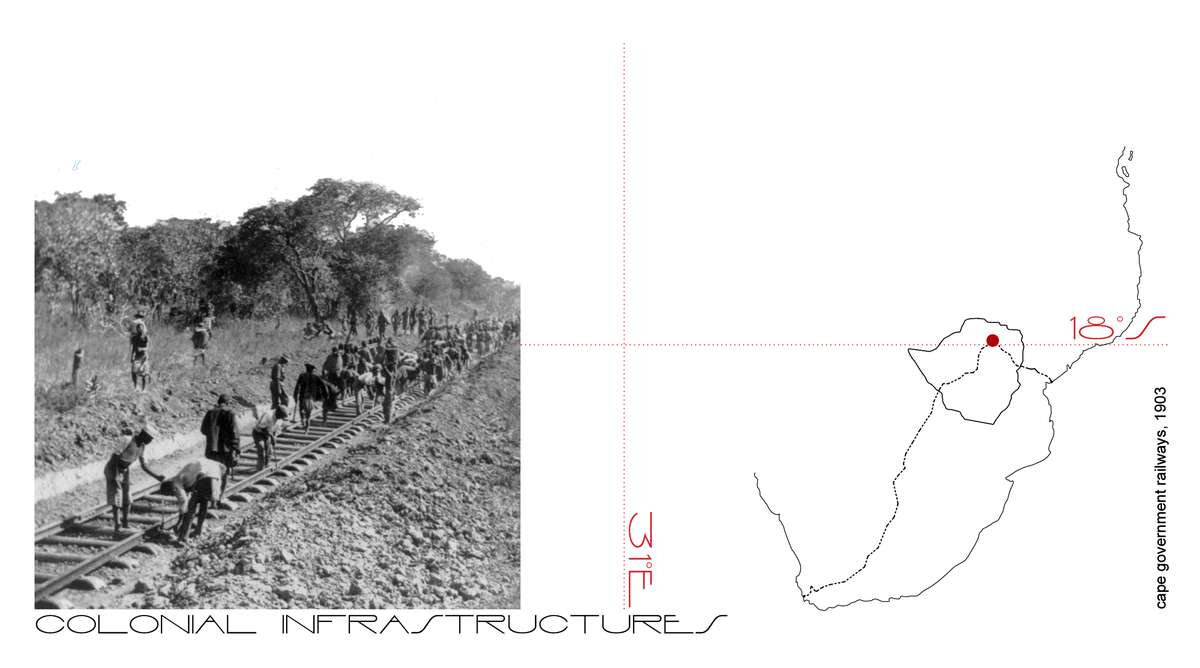
Colonial infrastructures: Cities and resilience are concepts which impacted and informed urban life in Zimbabwe well before colonial rule. However, the asymmetrical development and colonial legacies of railway infrastructure, in particular the forced mobility and constant in-migration of an exploited Indigenous labor force resulted in a "struggle over geography" which foreshadows spatial injustice and environmental degradation (Said, 1993).

Birth of the company town: By manifesting how the city of Harare was built on the subdivision of farmland, the promotion of Native townships; the dispossession of Indigenous heritage; and forced confinement of Black Africans in hostels, the project offers alternative contextually-driven, holistic future cityscapes in which all people—especially historically marginalized people—can thrive.

Growth of the city: Faced with the environmental crisis of the Anthropocene, the proposal builds on conceptualisation of the hole "to express the dismal quality of living in a city in today’s postcolonial urban context" from "Positing the Polis: Topography as a Way to De-centre Urban Thinking" (De Boeck and Baloji, 2017). In this regard, the railway yards become the origin of a stratigraphic investigation in the ontological paradigm of Harare, and indeed other African cities.
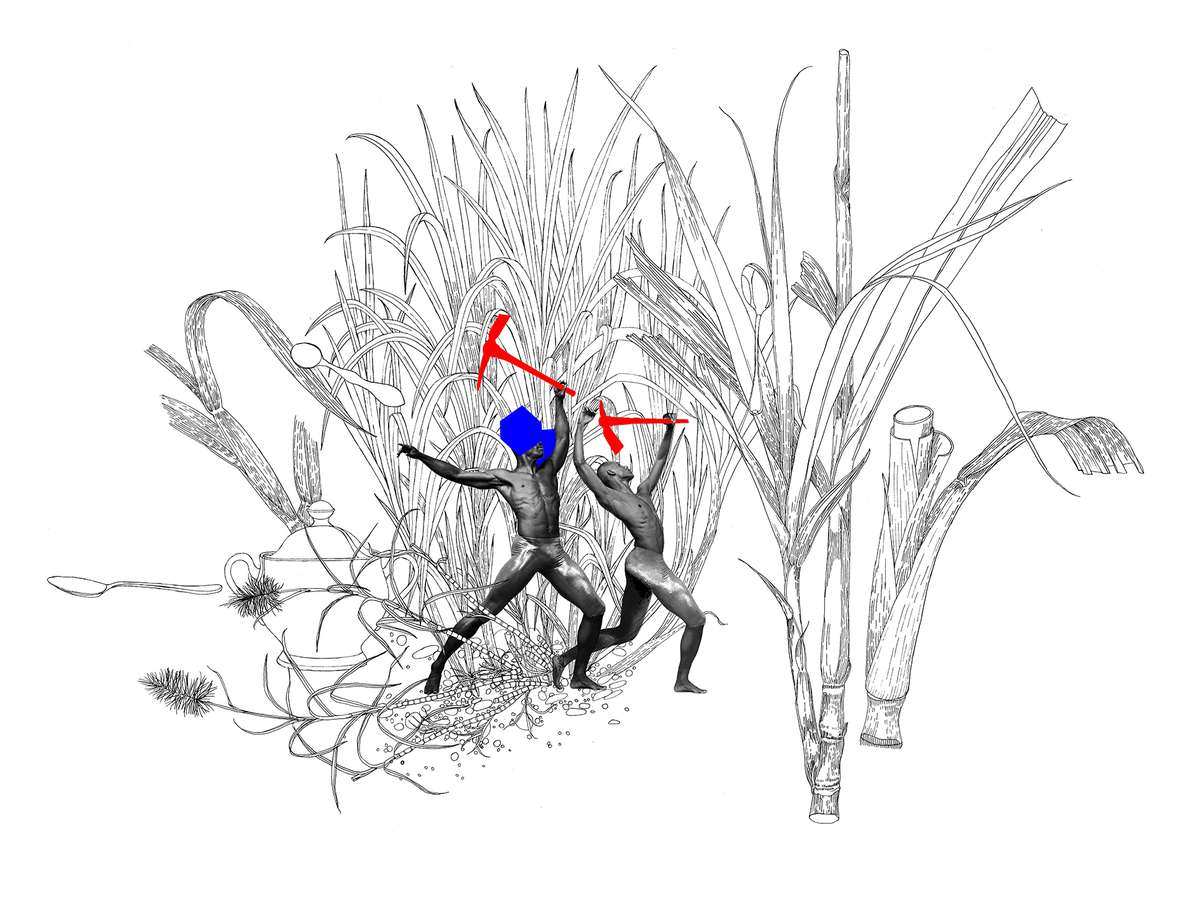
Black bodies: As a consequence of white settler colonialism, Black/Brown bodies serve(d) as tools in the reproduction of capitalist political economies, analogous to equipment such as the shovel, immovable furniture or buildings themselves. In the future city: what does equitable space or place look like for formerly exploited Indigenous people who have long been excluded or unjustly expelled from adequate private abodes or public commons.
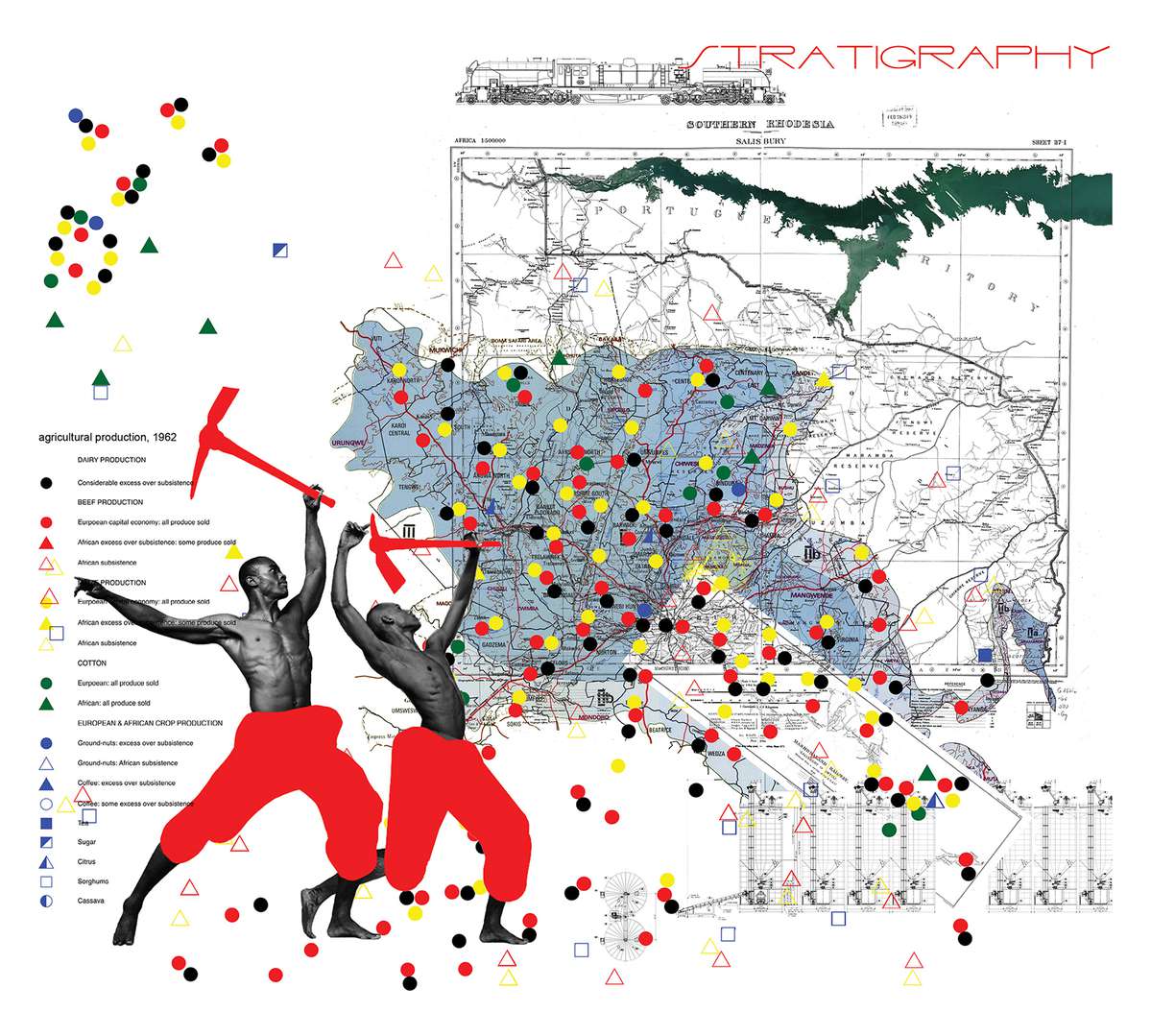
Agricultural production: A consequence of Zimbabwe being constructed as an extraction field for the exploitation of its resources is an outsize number of cartographic surveys. These mostly consist of geological and soil maps—with precise location of mineral resources—and outlines of farming and other productive areas, which the proposal fictionally intersects and critically locates within a parallel construction of the city and its neighboring "reserves," in what became Tribal Trust Land.
Of(f) the tracks: the legacy of colonial railway infrastructures
Of(f) the tracks: the legacy of colonial railway infrastructures

- Systemic changes
In Zimbabwe, as in other postcolonies, the imperial imaginaries of company towns and native townships developed in tandem with railway infrastructure to facilitate the extraction and exploitation of natural resources and human labor. Today these leftover morphological scars clearly manifest divisive, racist and unjust geographies.
Operating in, and upon, such segregated terrains—compounded by the complexity of conjuring post-pandemic life—calls for geographical imaginaries that go beyond tectonic artifice. It requires exploration, re-representation and restorative justice that challenges the neoliberal, Modern urban form, and the role infrastructure still plays in seeking fair distribution.
The proposal is a careful stratigraphy of railway landscapes that questions binary distinctions—urban and rural, non-Indigenous and local, rich and poor—to understand territories of discriminatory human settlement, in an effort to redress environmental, economic and racial injustices.
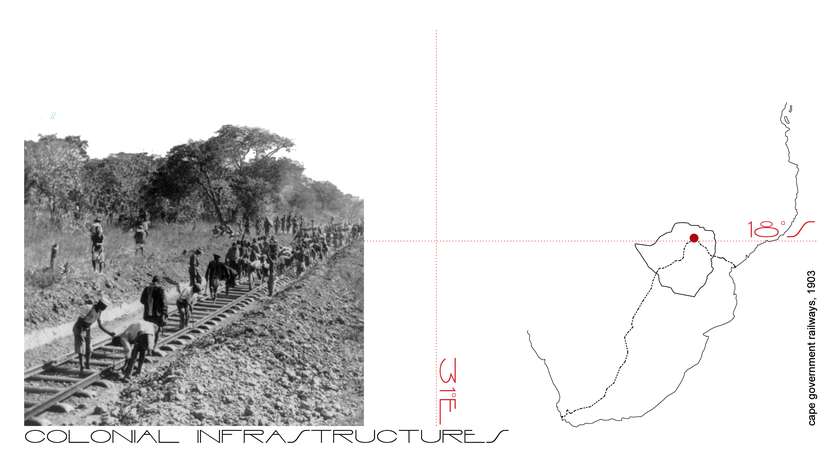
Colonial infrastructures: Cities and resilience are concepts which impacted and informed urban life in Zimbabwe well before colonial rule. However, the asymmetrical development and colonial legacies of railway infrastructure, in particular the forced mobility and constant in-migration of an exploited Indigenous labor force resulted in a "struggle over geography" which foreshadows spatial injustice and environmental degradation (Said, 1993).
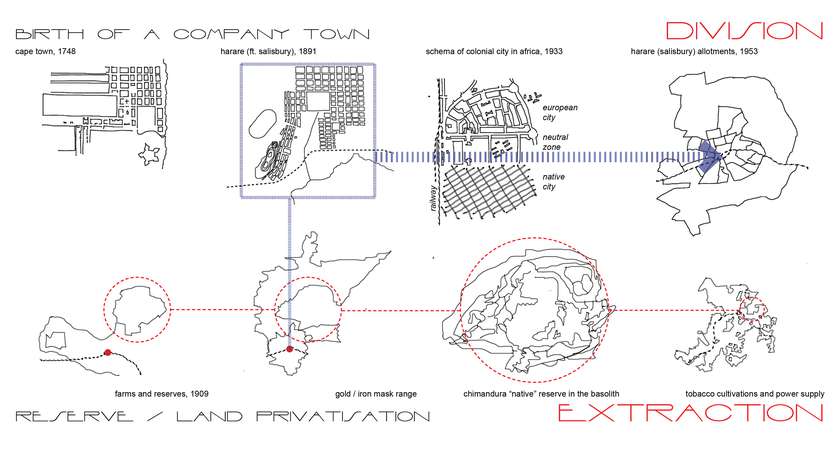
Birth of the company town: By manifesting how the city of Harare was built on the subdivision of farmland, the promotion of Native townships; the dispossession of Indigenous heritage; and forced confinement of Black Africans in hostels, the project offers alternative contextually-driven, holistic future cityscapes in which all people—especially historically marginalized people—can thrive.

Growth of the city: Faced with the environmental crisis of the Anthropocene, the proposal builds on conceptualisation of the hole "to express the dismal quality of living in a city in today’s postcolonial urban context" from "Positing the Polis: Topography as a Way to De-centre Urban Thinking" (De Boeck and Baloji, 2017). In this regard, the railway yards become the origin of a stratigraphic investigation in the ontological paradigm of Harare, and indeed other African cities.
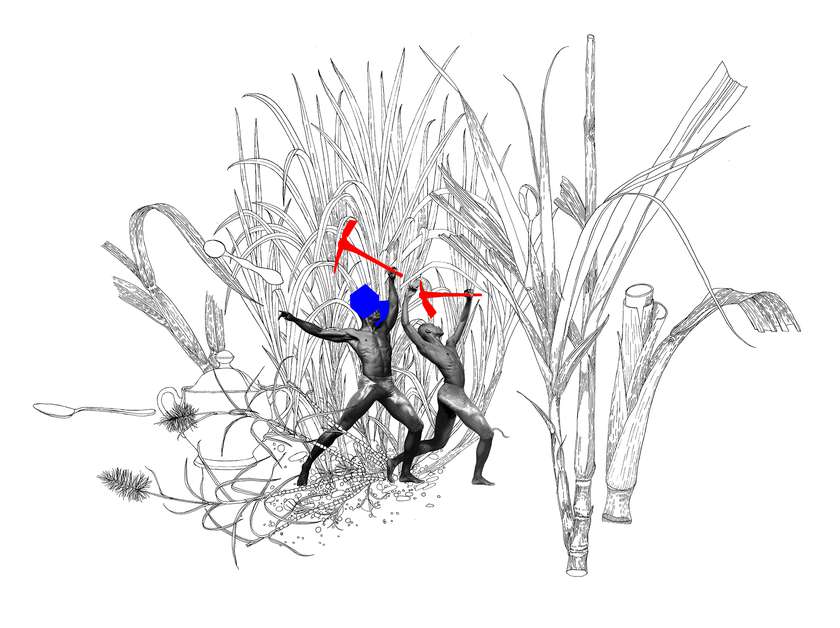
Black bodies: As a consequence of white settler colonialism, Black/Brown bodies serve(d) as tools in the reproduction of capitalist political economies, analogous to equipment such as the shovel, immovable furniture or buildings themselves. In the future city: what does equitable space or place look like for formerly exploited Indigenous people who have long been excluded or unjustly expelled from adequate private abodes or public commons.
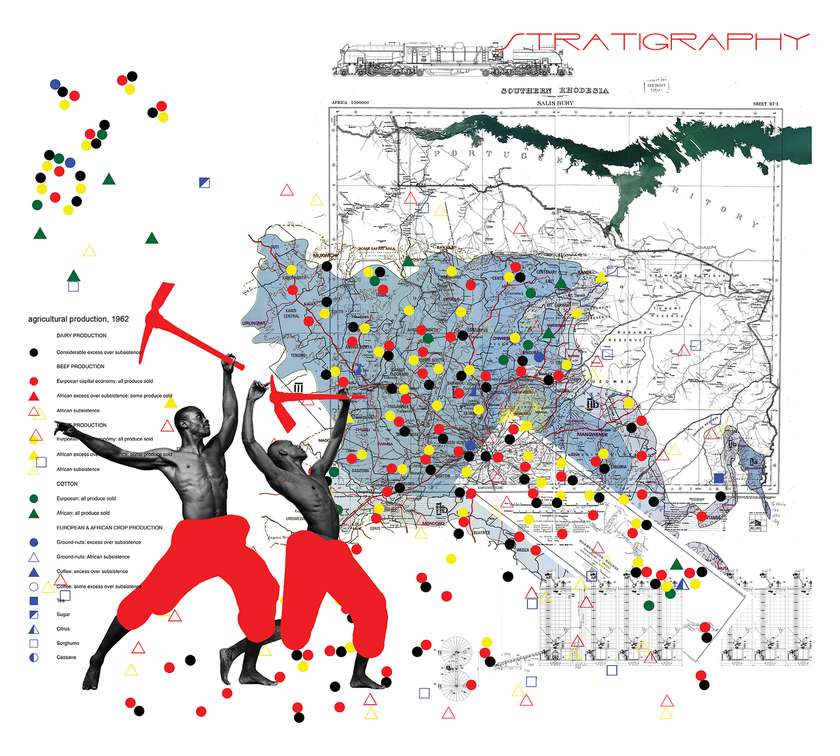
Agricultural production: A consequence of Zimbabwe being constructed as an extraction field for the exploitation of its resources is an outsize number of cartographic surveys. These mostly consist of geological and soil maps—with precise location of mineral resources—and outlines of farming and other productive areas, which the proposal fictionally intersects and critically locates within a parallel construction of the city and its neighboring "reserves," in what became Tribal Trust Land.